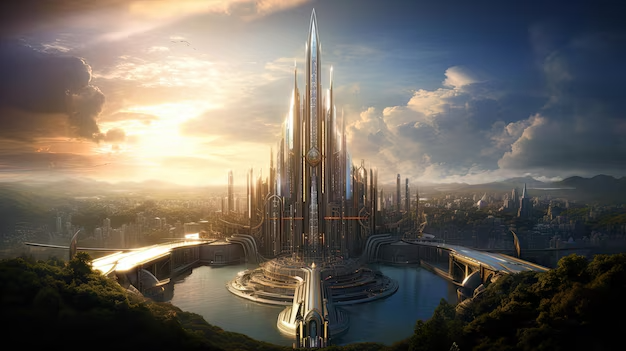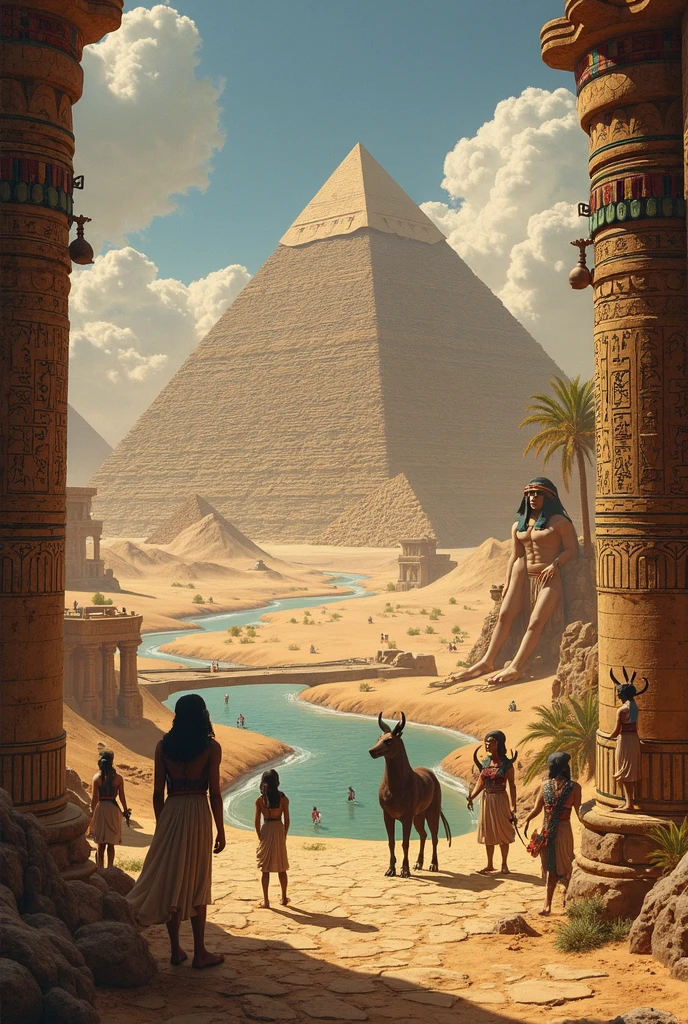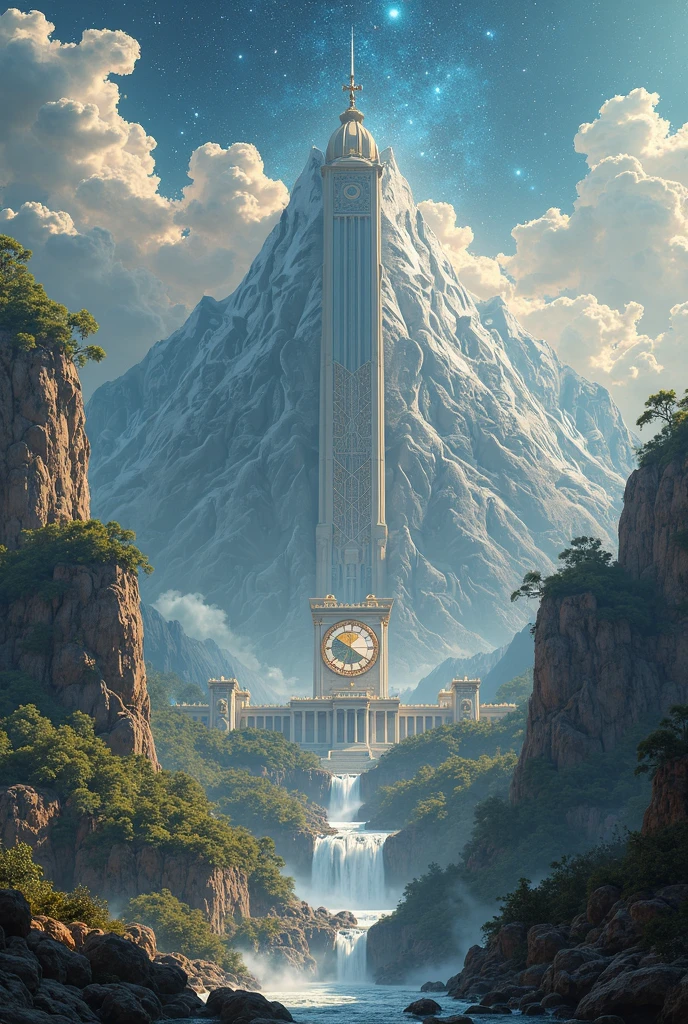Maori Mythology: The Legends of Tāne and the Creation
In Maori mythology, the stories of gods, creation, and nature intertwine to form a rich cultural tapestry. Among the most revered deities is Tāne, the god of forests, birds, and humans. His role in separating Ranginui (the sky father) and Papatūānuku (the earth mother) is central to Maori cosmology, bringing light and life to the world.
The Role of Tāne in Maori Creation Myths
Tāne is one of the children of Ranginui and Papatūānuku, born during a time when the world was shrouded in darkness. The gods lived cramped between their parents, unable to move freely. It was Tāne who, through immense strength and determination, pushed his father upward to create space for life to flourish.
Key Aspects of Tāne’s Legend
- Tāne as the separator of sky and earth
- His connection to forests and nature
- The creation of the first human, Tiki
- His role in bringing light to the world
Tāne and the Forests
As the god of forests, Tāne is deeply connected to the natural world. He is seen as the guardian of all living creatures that inhabit the trees, from birds to insects. The Maori people hold a profound respect for the forests, viewing them as sacred spaces filled with Tāne’s presence.
| Symbol of Tāne | Meaning |
|---|---|
| Kauri Tree | Strength and endurance |
| Birds | Freedom and connection to the heavens |
| Light | Knowledge and life |
The Separation of Ranginui and Papatūānuku
Before Tāne intervened, Ranginui and Papatūānuku were locked in a tight embrace, leaving no room for their children to thrive. The gods debated how to separate them, but it was Tāne who succeeded by lying on his back and pushing his father upward with his feet. This act allowed light to enter the world, marking the beginning of life as we know it.
The Aftermath of the Separation
- The tears of Ranginui became rain
- Papatūānuku’s sighs formed the mist
- The space between them became the realm of humans
Tāne and the Creation of Tiki
Another significant legend involves Tāne shaping the first human, Tiki, from the earth. Some versions say he molded Tiki from clay, while others suggest he used red ochre. This act established Tāne’s role as a life-giver and protector of humanity.
The Importance of Light in Maori Mythology
The concept of light is central to Maori beliefs. Before Tāne separated his parents, the world was in perpetual darkness. The arrival of light symbolized knowledge, growth, and the ability to perceive the world clearly. Even today, many Maori rituals honor this transition from darkness to illumination.
Modern Interpretations of Tāne’s Legacy
Today, Tāne remains a powerful symbol in Maori culture, representing environmental stewardship and the sacred bond between humans and nature. Conservation efforts in New Zealand often invoke his name, emphasizing the need to protect forests and wildlife.
For further reading on Maori mythology, check out these resources: Te Ara Encyclopedia, Maori Dictionary, and New Zealand Tourism.
Descubre más artículos fascinantes en nuestra web y síguenos en facebook.com/zatiandrops.
Beyond his role as separator of sky and earth, Tāne fathered numerous deities who became guardians of specific natural domains. These divine offspring reflect the Maori worldview where every aspect of nature possesses spiritual significance. Among the most important are:
- Tāne-mahuta – God of forests and birds
- Tāne-te-waiora – Bringer of health and wellbeing
- Tāne-nui-a-Rangi – Keeper of celestial knowledge
- Tāne-whakapiripiri – Protector of human relationships
The Whare Wananga: Tāne’s Sacred Knowledge
In Maori tradition, Tāne ascended through the twelve heavens to obtain three sacred baskets of knowledge from Io-matua-kore, the supreme being. This journey established the foundation for the Whare Wananga (houses of learning), where esoteric knowledge was preserved and transmitted through generations.
| Basket of Knowledge | Contents |
|---|---|
| Kete Aronui | Arts, crafts, and human knowledge |
| Kete Tuauri | Sacred rituals and incantations |
| Kete Tuatea | Warfare and negative energies |
While Tāne represents order and creation, Maui embodies cunning and transformation in Maori mythology. This beloved trickster figure accomplished incredible feats that shaped the Polynesian world:
Maui’s Legendary Exploits
- Fishing up the North Island of New Zealand (Te Ika-a-Māui)
- Slowing the sun to lengthen days
- Attempting to conquer death (which led to his demise)
- Bringing fire to humanity
The Fire-Bringing Myth
When humans first lacked fire, Maui traveled to the underworld to steal it from Mahuika, the fire goddess. After several dramatic encounters where Mahuika chased Maui by throwing her fiery fingernails (which became volcanoes), Maui successfully brought fire to humanity in the form of the kaikōmako tree, whose wood Maori traditionally used for fire-making.
Beyond the well-known figures, Maori mythology features an extensive hierarchy of deities governing natural phenomena and human affairs. This pantheon reflects the sophisticated spiritual understanding of Polynesian navigators who settled Aotearoa.
Major Maori Deities
| Atua (God) | Domain | Significance |
|---|---|---|
| Tangaroa | Sea and marine life | Brother of Tāne; revered by coastal tribes |
| Tāwhirimātea | Winds and storms | Only child who opposed separating Rangi and Papa |
| Rongo | Cultivated foods | God of peace and agriculture |
| Haumia-tiketike | Uncultivated foods | Protector of wild vegetation |
Central to understanding Maori mythology is the spiritual concept of mana (prestige/power) and tapu (sacred restrictions). These principles governed all aspects of traditional Maori life and continue to influence contemporary Maori culture.
Types of Mana
- Mana atua – Divine power from the gods
- Mana tupuna – Ancestral authority
- Mia tangata – Personal charisma and achievement
Examples of Tapu
The head was considered the most tapu part of the body, as it contained mana. This belief led to specific protocols around touching heads or passing objects over someone’s head. Other examples include:
- Sacred places like burial grounds (urupā)
- Chiefs and their personal belongings
- First fruits of harvest
- Women during childbirth
Maori star lore reveals sophisticated astronomical knowledge crucial for Polynesian navigation. The separation of Ranginui and Papatūānuku created the celestial sphere where stars became divine beings.
Important Celestial Figures
- Matariki (Pleiades) – Signaled the Maori New Year
- Puanga (Rigel) – Alternative New Year marker
- Atutahi (Canopus) – Guide for ocean voyagers
- Tautoru (Orion’s Belt) – Marker for seasonal changes
Navigation Techniques
Traditional Maori navigators (tohunga whakatere waka) used:
| Method | Description |
|---|---|
| Star compass | Memorized star paths for direction |
| Wave patterns | Read ocean swells for land detection |
| Bird observation | Followed migratory birds to land |
Maori mythology includes fascinating accounts of patupaiarehe, pale-skinned supernatural beings who inhabited remote forest areas. These elusive creatures feature prominently in tribal histories and cautionary tales.
Characteristics of Patupaiarehe
- Fair skin and hair (often red or blonde)
- Fearful of sunlight
- Skilled in magic and flute playing
- Associated with misty mountain areas
Encounters with Humans
Stories tell of patupaiarehe abducting humans to teach them special skills like weaving or healing. Some Maori families trace ancestry to these beings, accounting for European-like features among some iwi (tribes) before European contact.
For deeper exploration of these topics, consult these authoritative sources: Te Ara Encyclopedia, Maori Dictionary, and New Zealand Tourism.
Descubre más artículos fascinantes en nuestra web y síguenos en facebook.com/zatiandrops.
The Art of Whakairo: Carving Tāne’s Legacy
Maori whakairo (wood carving) serves as a sacred medium for preserving mythological narratives. The distinctive spiral patterns and human-like figures found in meeting houses (wharenui) often depict Tāne and other atua. Master carvers (tohunga whakairo) traditionally received their knowledge through spiritual visions, believing the wood already contained the story waiting to be revealed.
| Common Carving Motifs | Mythological Significance |
|---|---|
| Koru (spiral) | Represents unfurling fern frond – symbol of new life |
| Manaia | Guardian figure combining human, bird and fish features |
| Tiki | First human created by Tāne |
The Sacredness of Carving Materials
Specific woods like totara and koa were chosen for their connection to Tāne. Before felling a tree, carvers performed rituals to appease Tāne’s spirit, acknowledging the sacrifice of his “children” (the trees). The chips from carving were never burned but returned to the forest as offerings.
Waka Traditions: Oceanic Links to Mythology
The great migration waka (canoes) that brought Maori ancestors to Aotearoa each carry their own mythological associations. These vessels weren’t merely transportation but embodied spiritual concepts:
- Tainui – Associated with the god of ocean currents
- Aotea – Linked to celestial navigation traditions
- Mataatua – Carried sacred knowledge from Hawaiki
The Legend of Kupe
Before the great migration, the navigator Kupe discovered Aotearoa while chasing a giant octopus across the Pacific. His wife Hine-te-aparangi famously called out “He ao! He ao!” (A cloud! A cloud!) upon sighting land – later revealed to be the long white cloud (Aotearoa) over the islands.
Pūrākau: The Living Nature of Maori Stories
Unlike Western myths fixed in text, Maori pūrākau (traditional narratives) remain dynamic oral traditions. Storytellers adapt details to suit specific audiences while maintaining core spiritual truths. This fluidity allows myths to address contemporary issues while preserving ancestral wisdom.
| Traditional Storytelling Contexts | Purpose |
|---|---|
| Whare wananga | Formal transmission of esoteric knowledge |
| Marae gatherings | Reinforcing tribal identity |
| Child-rearing | Teaching moral lessons |
Contemporary Expressions of Maori Mythology
Modern Maori artists continue reinterpreting traditional stories through new media while respecting tikanga (cultural protocols). Notable examples include:
- Witi Ihimaera’s novels blending myth with modern settings
- Lisa Reihana’s digital art installations reimagining encounters with patupaiarehe
- Taika Waititi’s films incorporating mythological humor
Environmental Guardianship Movements
Many modern conservation initiatives like Te Urewera and Whanganui River legal personhood cases draw directly from Maori creation myths. These efforts recognize Tāne’s legacy by granting legal rights to natural entities, mirroring the mythological view of nature as living ancestors.
Rongomaraeroa: The Marae as Mythological Space
The traditional Maori meeting ground (marae) physically embodies cosmological concepts. The layout represents the separation of Ranginui and Papatūānuku, with the meeting house (wharenui) symbolizing the earth mother and its carved figures representing ancestral and divine connections.
- Marae ātea (open space) – The realm of light created by Tāne
- Wharenui (meeting house) – Papatūānuku’s body
- Tāhuhu (ridge beam) – The backbone of the sky father
For deeper exploration of these topics, consult these authoritative sources: Te Ara Encyclopedia, Maori Dictionary, and New Zealand Tourism.
Descubre más artículos fascinantes en nuestra web y síguenos en facebook.com/zatiandrops.
The Healing Traditions of Tāne
In Maori medicinal practices, rongoā (traditional healing) draws heavily from Tāne’s connection to forests. Healers (tohunga rongoā) believe medicinal plants contain mauri (life force) gifted by Tāne. Specific rituals accompany plant harvesting to maintain spiritual balance:
- Chanting karakia (prayers) before taking leaves or bark
- Offering the first portion back to Tāne
- Using only what’s needed to avoid waste
Sacred Healing Plants
| Plant | Maori Name | Medicinal Use |
|---|---|---|
| Kawakawa | Macropiper excelsum | Pain relief, digestive issues |
| Manuka | Leptospermum scoparium | Antibacterial properties |
| Harakeke | New Zealand flax | Wound dressing, splints |
The Concept of Whakapapa in Mythology
Whakapapa (genealogy) forms the backbone of Maori mythology, connecting humans directly to the gods. This intricate web of relationships explains natural phenomena through ancestral lines:
- Mountains as frozen ancestors
- Rivers as their tears
- Forests as Tāne’s living descendants
Sample Whakapapa Line
A typical descent line might trace back:
- Living person
- Tribal ancestor
- Great migration canoe captain
- Polynesian homeland figures
- Māui or other demigods
- Original gods like Tāne
- Ranginui and Papatūānuku
Mythology in Maori Performing Arts
The dramatic retelling of myths through kapa haka (performance art) keeps traditions alive. Key elements include:
| Performance Style | Mythological Connection |
|---|---|
| Pūkana (fierce facial expressions) | Represents the intensity of gods like Tāwhirimātea |
| Poi (ball swinging) | Symbolizes the stars Maui slowed |
| Waiata aroha (love songs) | Echoes the eternal love of Rangi and Papa |
The Taniwha: Water Guardians in Myth
These powerful water spirits inhabit Maori legends as both protectors and threats. Their characteristics vary regionally:
- Lake monsters – Often guardians of specific tribes
- River taniwha – Shape-shifters that create dangerous currents
- Ocean taniwha – Massive creatures resembling whales or sharks
Famous Taniwha Examples
Notable taniwha from different iwi include:
- Pania – Reef maiden of Napier
- Hotupuku – Land-based taniwha near Rotorua
- Ngake and Whātaitai – Creators of Wellington Harbour
Mythological Influences on Maori Architecture
Traditional structures embody cosmological concepts:
- Pātaka (elevated storehouses) – Represent Tāne’s separation of earth and sky
- Pouwhenua (boundary markers) – Carved figures depicting ancestral guardians
- Parihimanihi (carved lintels) – Often show creation narratives
The Wharenui as Cosmic Map
A meeting house’s architecture mirrors the Maori universe:
| Architectural Element | Mythological Representation |
|---|---|
| Ridgepole (tāhuhu) | The backbone of Ranginui |
| Wall panels (poupou) | Ancestral connections |
| Doorway (kuwaha) | Passage between worlds |
For deeper exploration of these topics, consult these authoritative sources: Te Ara Encyclopedia, Maori Dictionary, and New Zealand Tourism.
Descubre más artículos fascinantes en nuestra web y síguenos en facebook.com/zatiandrops.


